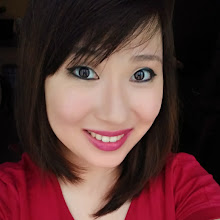My visit: December 2, 2011
Day 5 (morning)
99 Yulgong- no,
Jongno-gu, Seoul
Korea
02-7629513
Schedule:
April- October 9am- 6:30pm
December-February 9am-5pm
November & March 9am- 5:30pm
Closed on Mondays
The Palace Admission:
Adults W3, 000
Children W1, 500
The Secret Garden Admission:
Adults W5, 000
Children W2, 500
No smoking and No pets allowed within the palace grounds.
Changdeok Palace literally means "Palace of Prospering Virtue". It is referred to as the East Palace because it is located at the east of Gyeongbok Palace.
It was the secondary palace of Gyeongbokgung, the main palace. All 5 palaces were destroyed by fire during Japanese invasion in 1592. It was restored in 1610 and served as the main palace when for about 270 years until Gyeongbokgung was finally reconstructed in 1868.- taken from back of the ticket
Injeongjeon (Main Hall)
In 1997, Changdeokgung was added to the UNESCO World Heritage List as an "outstanding example of Far Eastern palace architecture and garden design- Wikipedia
Chongjon Hall (National Treasure)
The coronation of a king and other official grand ceremonies were carried out in Injeongjeon or Chongjon Hall. It is known as the throne hall of Changdeokgung.
Originally built in 1405, it was rebuilt in 1610 after being burned down during the 1592 Japanese invasion, and a third time in 1804 after being destroyed by a fire.
Donhwamun Gate (Main Palace Gate)
Built in 1412, Donhwmun has a two- story pavilion- type wooden structure, and is the largest of all palace gates. it was burned down during the Japanese invasion of 1592 ad was restored in 1608.
somewhere near the entrance
Changdeok Palace Timeline:
- 1405 Palace construction begun
- 1406 Palace secret gardens established
- 1411- 1412 Geumcheongyo and Donhwamun built
- 1592-98 Changdeok Palace destroyed during Japanese invasion
- 1610 reconstruction begun; It was upgraded as official royal residence
- 1623 Palace buildings were destroyed during a revolt
- 1647 Seonjeong-jeon, Daejo-jeon and Huijeong-dang rebuilt
- 1833 daejo-jeon and Huijeong-dang bured and rebuilt the next year
- 1917 Daejo-jeon lost in major fire
- 1997 Changdeok Palace listed as UNESCO World Heritage
Huijeongdang Hall
It is originally the king's bed chamber but it also became his workplace, or Pyeonjeon. In 1917, it was destroyed in a fire. It was reconstructed with dismantled materials from the king's residence at Gyeongbokgung Palace.
Huijeong-dang- king's residence
Daejo-jeon- queen's residence
Huijeong-dang- king's residence
Daejo-jeon- queen's residence
inside Huijeongdang Hall- King's residence
The interior is outfitted with Western furnishings like glass windows, chandeliers (electric lighting), modern bathroom facilities, wooden floorboards and baroque like furnishings.
goofing around
Below are some of our photos around Changdeokgung Palace...
Giordano skinny jeans bought in Hong Kong
one of the 8 Chinese scholar trees just beside the front gate
Near the front gate, Donhwamun, are eight Chinese scholar trees ranging between 300 to 400 years old. These site used to be where court officials had their offices, and the freely spreading branches of the trees were a metaphor for the spirit of the various scholars. - taken from the visitor's map
Trivia: Dae Jang Geum, a popular Korean Drama in the year 2000 was filmed here.
Vicky Belo smile
DH wants me to imitate Viky Belo's smile by saying "aaaah" lol According to him, it elongates my face so it looks slimmer in the photo ; p
DH & his fish sticks in a hot soup
DH didn't leave the place without sampling the food in the area. In this case, fish sticks in a cup filled to the brim with soup stock.
Next Korea entry will be all about Kimchi making!


























